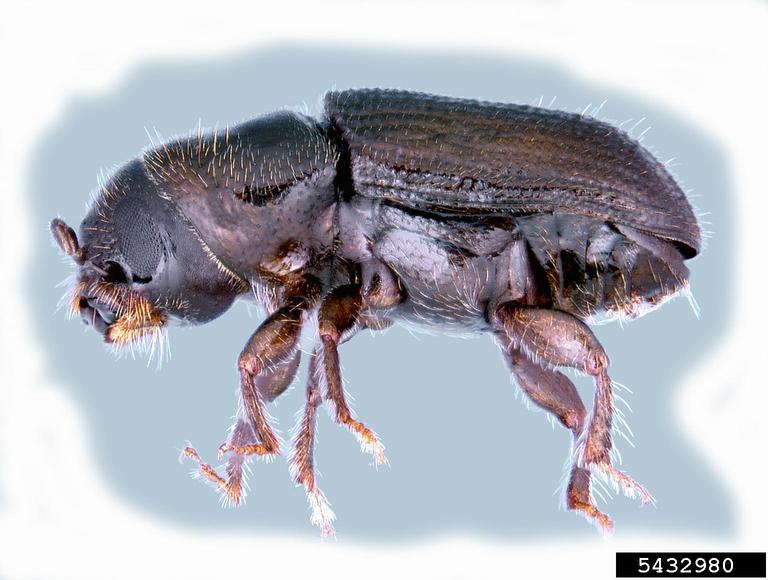The emerald ash borer has been discovered recently in Cambridge, MA; York, ME, and as far north as Nova Scotia. Hemlock wooly adelgids are feasting on trees from Maine to Georgia. If you’ve been watching the news in New England lately, you’ve probably heard of these invasive insects and the impacts that they’re having on our forests. Why are these species moving into new areas and how can we protect our forests from this threat?
Most organisms are in some way adapted to the climate where they live, and as the climate continues to change they will have to adjust when, where, or how they operate in order to survive. Some will stay put and simply adjust their physiology or behavior, while others will move across the landscape to find a new environment where conditions are favorable. The most mobile creatures—those that can walk, hop, swim, or fly to find new habitat—may even be able to keep pace with rapid climate change. But stationary organisms, like trees, can only “move” their populations into new areas over long periods of time. This difference in speed means that climate change will lead to some new interactions between species that did not previously come into contact with each other.
The starkest examples of this phenomenon are already evident in the realm of forest pests, where we see both native pests (e.g., mountain pine beetle) and introduced pests (e.g., hemlock wooly adelgid and emerald ash borer) moving into new geographies as climate suitability changes. Being ectothermic (i.e. cold-blooded), insects are particularly sensitive to temperature and many species are limited in how far north they can survive because certain winter minimum temperatures are lethal for them. Recent warming trends, and milder winters in particular, have improved overwinter survival for a number of pests and allowed them to expand their ranges farther north.

A clear example, which is the focus of the September Climate Smart Land Network bulletin, is the movement of southern pine beetle (SPB) into southern New England in recent years. SPB is not overly picky when it comes to selecting host trees—it attacks almost all pine species in its native range in the U.S. (from Florida into southern New Jersey and west to central Arizona), but it prefers southern yellow pines such as loblolly, shortleaf, Virginia, pond, and pitch pine. In fact, it is one of the most destructive pests in the southern U.S.
Unfortunately, SPB seems poised to invade most of the Northeast over the coming decades, with new research suggesting that the climate across all of northeastern U.S. and southeastern Canada will be hospitable for SPB by 2090. This is causing concern in forest conservation and management circles in the Northeast because recent outbreaks in the New Jersey Pinelands, Long Island, NY, and Connecticut have shown that it can and will successfully attack trees that would be considered “non-traditional” SPB hosts, including eastern white pine, eastern hemlock, red pine, Scots pine, and others. Plus, some of SPB’s usual targets, like pitch pine, are keystone species in unique and threatened natural communities in the Northeast, such as the Pine Barrens of southeastern Massachusetts.
Although, there is a bit of silver lining. Many forest types in the Northeast consist of a mix of pine and hardwood species, and the absence of many extensive areas of pure pine (unlike the southern U.S.) may help reduce the risk of SPB outbreaks. Plus, the fact that SPB is native to the southeastern U.S. means we have extensive information (both research and institutional knowledge) about this pest, and examples of proven strategies for controlling the spread and severity of infestations. With the right networks in place for learning and sharing information, like the CSLN, forest managers in newly invaded areas may have a fighting chance.





 Back to all
Back to all
